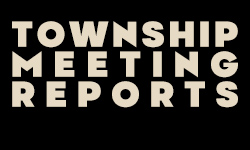by Charles Marohn
"I got a question from a good friend who challenged me that I was being anti-growth, that if we followed Rational Response #5, communities would do mostly maintenance and even then a high percentage of those projects wouldn't pencil out.
BINGO!
For a real ROI calculation, we have to make sure we are talking about dollars. Engineers, planners, economic development professionals and other advocates of the current approach have become quite skilled at concocting phony ROI numbers. Your analysis needs to be from the local government's point of view, which means a real evaluation of dollars in versus dollars out.
Understand that if this was easy, we would already be doing it. As you start to undertake Rational Response #5, you are going to find that pretty much all of the projects you were doing in the old system have a negative ROI. Your professional staff, your development community and others used to the current growth paradigm will want to throw up their hands. They will ask, "What are we supposed to do?"
The answer: We're supposed to do projects that make our community more prosperous.
In 1999, the Washtenaw-Potawatomi Land Trust prepared a comparison of land use costs for the Ann Arbor Township Board.
This is akin to the 150+ Cost of Community Services studies analyzed by the American Farmland Trust. But it's right next door.
As we have said before, Residential Development, the rooftops that a few Township residents are constantly promoting, cost more in tax dollars than they bring in. Open space and farmland are net revenue producers.
You can view the entire report online here on Slideshare.
Some of the pages are sideways. They will be easier to read if you download the report from here as a pdf. You can then rotate the pages in your pdf viewer.
Whether you see it immediately or end up downloading depends on your computer and how your web browser is configured.
"Economic development projects and conversations often are based on magical thinking and 30-year-old industrial attraction formulas rather than data about how the real world works now.
The pages of this section educate you about what is and is not worthy of public sector and business association support and effort. These efforts sometimes spend plenty of tax money and achieve very little of the promised job creation and business expansion.
This article will give you the analytical tools you need to determine what is worthwhile, what can happen solely through the force of a businessperson's perseverance, and what needs a little nudge from a government, private development organization, or public-private partnership.
Business retention and entrepreneurship support programs are easily the best economic development investment. Rather than producing those colorful expensive ads, your chamber of commerce should be concentrating on serving the economic base businesses that are there already, and developing a culture that supports new business ideas.
Too many economic development organizations and neighborhood associations think they need to devote major blocks of time and money to "marketing" and "branding" themselves, and then somehow, someday, the right people magically will notice them and relocate."
Read the rest of the Useful Community Development blog article here: Economic Development Realities


